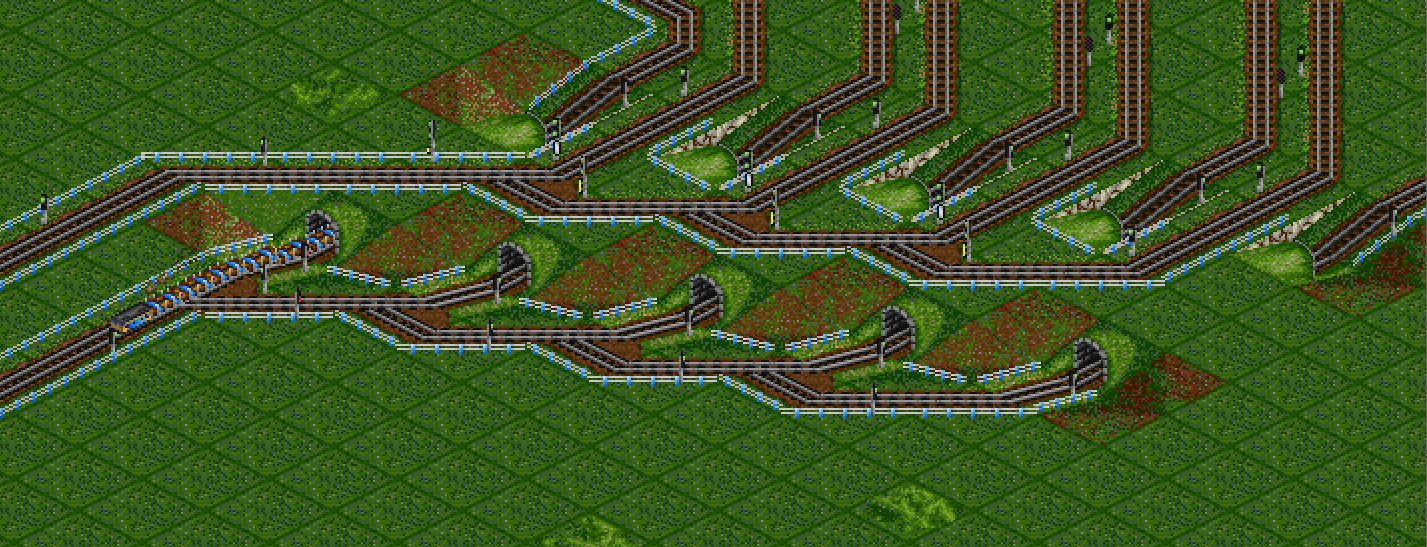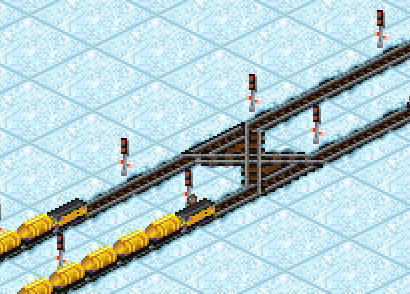Science Redux: Station and Track Designs

There's quite a bit of OpenTTD Science and as is the nature of such things, later videos will often improve upon designs featured in earlier ones. And while it's fun testing theories, scrolling through videos trying to find designs gets old fast. So I've collected a little summary of things we've discovered.
Signalling
For most networks, it is fine to use path signals throughout. This does not increase CPU usage over other types of signal - "path signals use more CPU" is a myth! The most important rule of signalling for high throughput is to keep a consistent signal gap.

In almost all situations, keeping a consistent signal gap is the most important concern. There is no need to leave gaps after a junction, or in front of a station - most of the time this will harm throughput with no other benefit. Most of the relevant science is in Can You Put A Signal After A Junction?
Stations
Compact designs with short signal gaps tend to have the highest throughput. I call the following designs "best" as I consider them an ideal balance between high throughput, small footprint and simplicity of construction.
All station designs operate correctly when using one-way path signals, meaning no need to switch between signal types when building or create signals trains will pass from the back.
Compact PBS Terminus
This station can typically handle a throughput of 1500 tons/month using 4-5 tile SH25 hauled trains.

Adding more platforms typically does not reliably increase the throughput by a significant amount, although it will allow more trains to be stored when industry production is variable.
Compact Semi-balanced RoRo
This station can typically handle a throughput of 1900 tons/month using 4-5 tile SH25 hauled trains. This is close to maximum saturation of single track railway (without the use of advanced clocked releases or merges).

Note the positioning of the exit signals - this configuration offers a slight throughput boost having the outer signals closer to the merge.
RhomboRoRo
This station offers similar throughput to the Compact Semi-Balanced RoRo for rail vehicles, but for faster maglev trains has up to 15% greater throughput in its default 4-platform configuration. This also increases as it is expanded, as shown in Maglev Station Design.
You may also consider building this for slower trains as while it does not have a throughput advantage, it can hold more waiting trains. The design is also easy to expand to any number of platforms.

Other Stations
There are some alternative station designs based around KERS principles which offer slight throughput advantages (especially with JGRPP's realistic braking option). These are discussed in Is It Worth Building KERS Stations and Thanks, I Hate It!
Switching Tracks
When trains need to switch between two (or more) tracks in the same direction, there are two useful designs.
Chained Flip-Flap
This simple design allows trains to switch tracks without having too much of a throughput penalty compared to fully independent tracks.

See Double Track Junctions for more about this design.
Crossover With Parallel Bay
This design offers higher throughput than the chained flip-flap, and minimises unnecessary track switches. The increased throughput comes at the cost of a larger footprint and higher complexity.

Note the use of consistent signal gaps even on the parallel track.
Simple Crossovers (Don't Use!)
Simple "X" style crossovers are a bad idea. It is easy for the junction to end up in a state where every train switches track, reducing the throughput to the level of single track.

